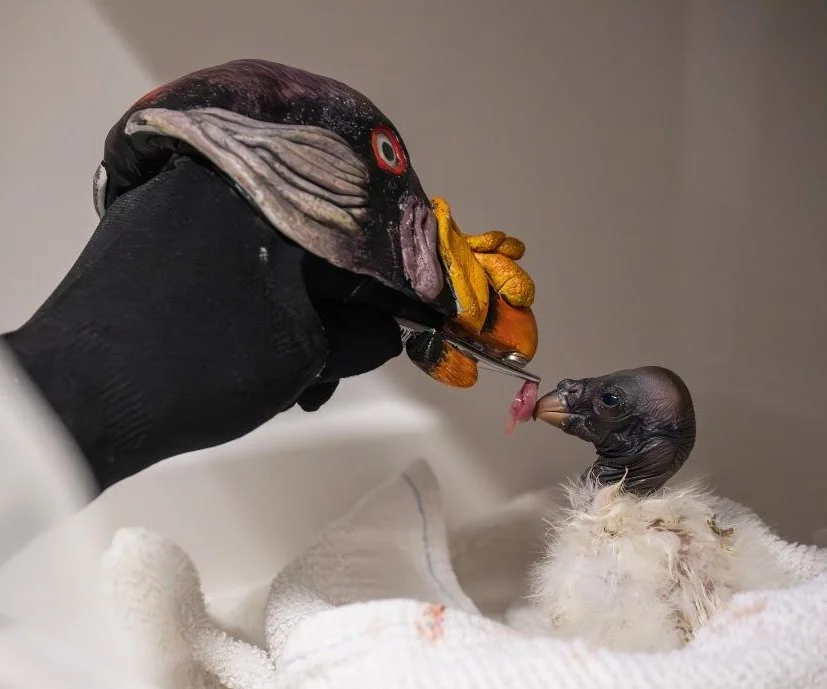
Bronx Zoo Welcomes First King Vulture Chick in 30 Years with Innovative Puppetry
The Bronx Zoo in New York has made headlines with the successful hatching of its first king vulture chick in three decades. This event is not only significant for the zoo but also for conservation efforts, showcasing a fascinating method of hand-rearing that emphasizes the delicate balance between wildlife and human interaction.
When the chick hatched, zoo officials introduced a unique hand puppet designed to resemble a mother vulture. This innovative approach aims to prevent the baby bird from imprinting on its human caretakers, a crucial element in ensuring the chick can integrate into its natural behaviors as it grows. The use of a puppet is rooted in a long-standing practice; Bronx Zoo ornithologists first pioneered this technique over 40 years ago with Andean condor chicks. This rich history highlights the zoo's commitment to wildlife conservation and the effectiveness of creative problem-solving in animal care.
"Our team is excited to apply this forward-thinking method as we hand-raise this precious king vulture chick," officials shared via social media. The puppet not only serves to mimic the appearance of the mother bird but also allows caregivers to maintain a level of anonymity by wearing costumes that obscure their human features during interaction. This strategy aims to foster a natural environment for the growing chick, preparing it for a future where it can thrive independently.
The decision to utilize such innovative techniques represents a significant milestone in wildlife management. By minimizing human influence on the chick's development, zoos can help ensure that future generations of birds maintain their natural instincts. This is particularly vital for species that face the threat of extinction due to habitat loss and other human-related challenges.
The king vulture, known for its striking appearance and scavenging habits, plays a vital role in its ecosystem. With the successful hatching of this chick, the Bronx Zoo not only contributes to the preservation of the species but also inspires hope for conservationists everywhere. The use of puppetry in animal care may pave the way for other zoos to adopt similar practices, encouraging healthy developmental outcomes for a variety of species.
As the world watches this little chick grow, questions arise about the broader implications for animal husbandry in zoos worldwide. Will more facilities adopt such innovative techniques in their conservation efforts? How can we further bridge the gap between human care and natural behaviors in wildlife? Readers are encouraged to share their thoughts and experiences regarding the fascinating world of animal care.